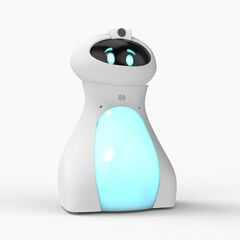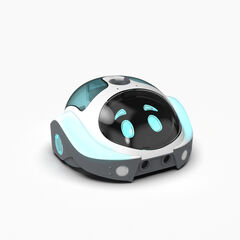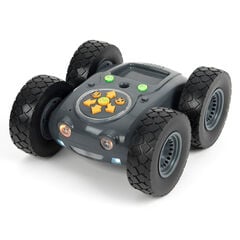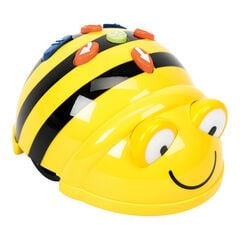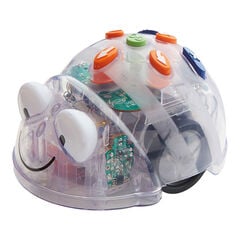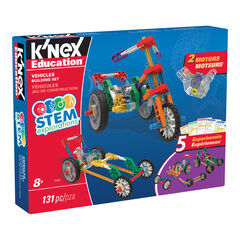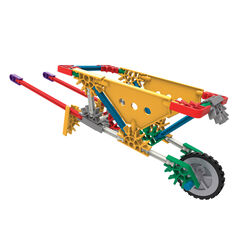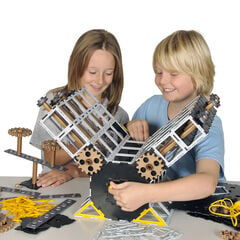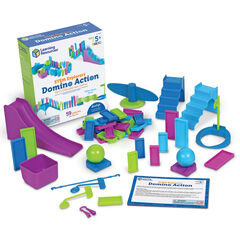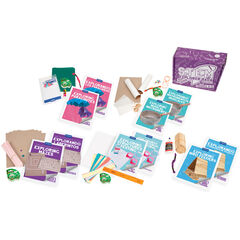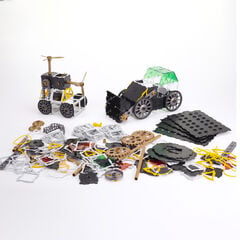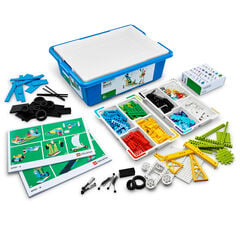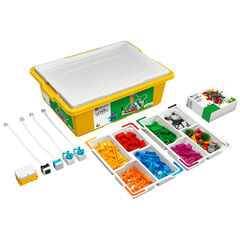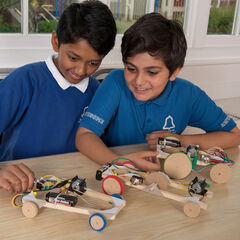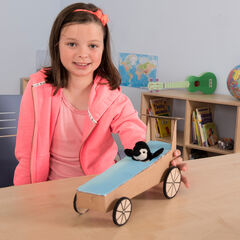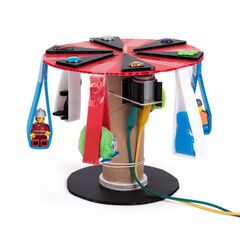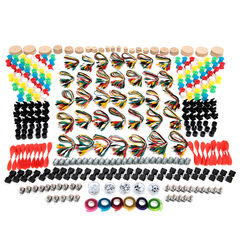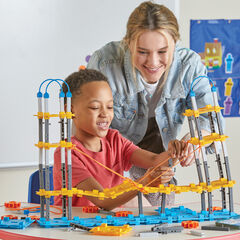In this blog, we explore practical ways to set up a school STEM club for primary children which includes lots of fun ideas.
Why Start a STEM Club?
STEM (Science, Technology, Engineering and Mathematics) activities are hugely beneficial to children. They develop children’s problem-solving skills, creativity, communication and confidence. This provides them with valuable skills for the future workplace and encourages a love of learning.
STEM school clubs offer the types of ‘hands-on’ activities that children love. These activities foster children’s natural curiosity and eagerness to explore and create.
STEM versus STEAM
More recently, the Arts have been added to the term STEM, to create the term STEAM. This was done to emphasise the importance of the Arts in promoting creative thinking and problem-solving. Arts subjects are considered crucial skills for idea development, as well as the technical knowledge that STEM subjects provide.
To find ideas for clubs that focus on the ARTS, read our ‘Fun and Educational School Club Ideas‘ blog.
Continue reading for fun ideas for starting STEM school clubs for primary children:
Science School Club Ideas
Science is both fun and essential for children’s understanding of the world, so why not foster children’s natural curiosity and encourage the scientists of the future by starting a science club. Provide children with opportunities to perform simple experiments both indoors and outdoors, such as Popping Rockets, Erupting Volcanoes and Mentos Geysers.
Some other ideas you could try are:
- Going on minibeast hunts, pond dipping and using magnifying equipment to look closely at plants, insects, rocks and fossils.
- Setting up a yearly school science fair for children to showcase their science experiments and findings. A great one for developing self-confidence and presentation skills.
- Exploring ways to combat climate change. Make simple solar panels and wind turbines to understand about renewable energy or investigate your school’s carbon footprint. For more ideas on this, read our ‘How Can We Teach Climate Change and Sustainability at Primary?’ blog.
Coding School Club Ideas

For all enthusiastic computer programmers, a coding club is a great option. Combining both creativity and technology, coding develops problem-solving skills and boosts communication skills and self-confidence. The ability to code is an excellent skill to have in our ever-expanding digital world.
There are so many fun activities you could do. Here are some ideas to get you started:
Program Robots
Use our ever popular Bee-Bot and Blue-Bot to:
- Program the robots to move along our wide selection of themed mats. You can set up treasure hunts, play games such as snakes and ladders or role-playing adventures.
- Create works of art with the Bee-Bot pen holders.
- Set up obstacle courses and mazes allowing the children to set each other challenges. Why not take the fun outside with our Rugged Robot? Set up some fun and challenging obstacle courses on different terrains.
More advanced programmers could use our newer Loti-Bot or Oti-Bot, using the apps to program them.
There are many activities you could do, such as:
- Completing more complex obstacle courses and mazes.
- Unleashing artistic skills by using the bots to draw complex shapes and patterns.
- Using the range of sensors the bots have to explore how they interact with their environment. Then allow children to consider the role of robots in the world currently and in the future.
- Programming the robots to perform a basic dance routine!
Endless fun and exploration to be had!
Build Computer games
Use Scratch and/or popular apps such as CodeSpark and Hopscotch to build simple computer games. Let the children have lots of fun creating their own characters and backgrounds, adding sound effects and setting challenges for others to try.
Basic Animation
Teach basic animation techniques, including how to animate still photographs (tablets have software that do this, as well as free apps such as Stop Motion or iMotion).
Children love to create short stop motion animations with animals and characters. Use model figures and buildings that the children have made.
See our videos for more inspiration:
In this example we made cork characters and a craft roll castle. We then simply took photos after each small movement, combining them to create a video. Children can also get creative by adding music, sound effects, an intro and an end piece.
This additional example of Oliver’s Snowy Polar Bear Family shows an inspiring stop motion project by 8 year old Oliver who loves creating his own mini stop motion movies. This one he created just shows what can be achieved with an phone or tablet with free Stop Motion APP, and some imagination and creativity.
Dance and Music Sequences
Use coding apps, such as our Bot apps to allow the children to create dance routines and music sequences.
- Dance – children could try each other’s dance moves to see how easy the steps are to follow. Then they can have a go at debugging if any problems are identified.
- Music – children could learn about patterns of sounds and rhythms through coding music sequences. They could then share their masterpieces with one another, adapting and making changes in response to audience feedback.
Build Websites
Use HTML/CSS to teach the children how to build websites. Set the children challenges to create websites for different purposes. Perhaps organise a special event to showcase children’s work on a particular project. Or maybe just showcase their favourite hobbies and interests.
Construction School Club Ideas
Children of all ages love to build. Use construction kits, such as Lego, Knex and magnetic kits. Encourage large projects in groups, such as using the STEM Explorers – Bridge Builders Classroom Set to build team working skills, explore design concepts and develop building techniques. Why not have different building themes for each week or allow the children to make their own individual creations? Furthermore, construction kits can be easily stored in boxes and containers so it’s an easy club to set up.
Inventors and Makers School Club Ideas
Children love to do ‘hands-on’ activities and providing an opportunity for them to make new things, using a variety of materials, allows them to think creatively, develop their ideas and problem-solving skills and most of all have fun.
There are a whole range of activities you could do. Here are just a few ideas:
- Build structures and test their strength.
- Design vehicles and organise a race.
- Design rockets, set up a launch and see which one travels the furthest.
- Use electronics to design and make games.
- Make hydraulic systems to create moving parts.
- Have junk modelling sessions and set design challenges.
Why not take it a step further and invest in a 3D printer? Children can learn about engineering principles by working through the process of designing, prototyping and troubleshooting. An excellent resource for children to see their designs come to life, and for children to learn about digital tools, computational thinking and problem-solving.
Why not also set up a ‘Dragon’s Den’ or ‘Shark Tank’ scenario where children can demonstrate their inventions? Or why not have some weeks when you focus on a particular inventor? For example, explore Lionel Lukin’s pioneering ‘unsinkable’ lifeboat invention and see if the children can make an unsinkable boat.
For even more STEM club ideas, read Running a STEM Club (tts-group.co.uk) written by STEM expert Caroline Alliston. It’s an inspiring read with lots of practical tips for running a STEM club on a budget.
Maths School Club Ideas
A Maths club can be beneficial to a wide range of pupils in different ways.
Here are some ideas that cater to diverse needs:
- Provide budding mathematicians with a chance to challenge themselves. They could compete with other pupils and explore areas they’re interested in in more depth.
- Set up a club that offer drop-in sessions that provide additional maths support for children. Use them to provide extra time to practise challenging topics in a fun way.
- Present the club as one where children can simply have fun with Maths. There are a whole variety of Maths games to choose from. Child-friendly versions of countdown and scavenger hunts are also great fun.
For more Maths activity ideas, read our Maths blogs.
Conclusion
STEM activities really are brilliant at providing children with lots of hands-on experiences. They are fun and engaging, and will set them up with invaluable skills for life.
We hope that this blog has provided you with lots of ideas for setting up your own STEM club. We encourage you to take the leap, start a club, and inspire the next generation of scientists and engineers.
Written by Kelly Lawrence.
Kelly has 15 years of experience working as a Primary School Teacher in both Key Stage 1 and 2.























